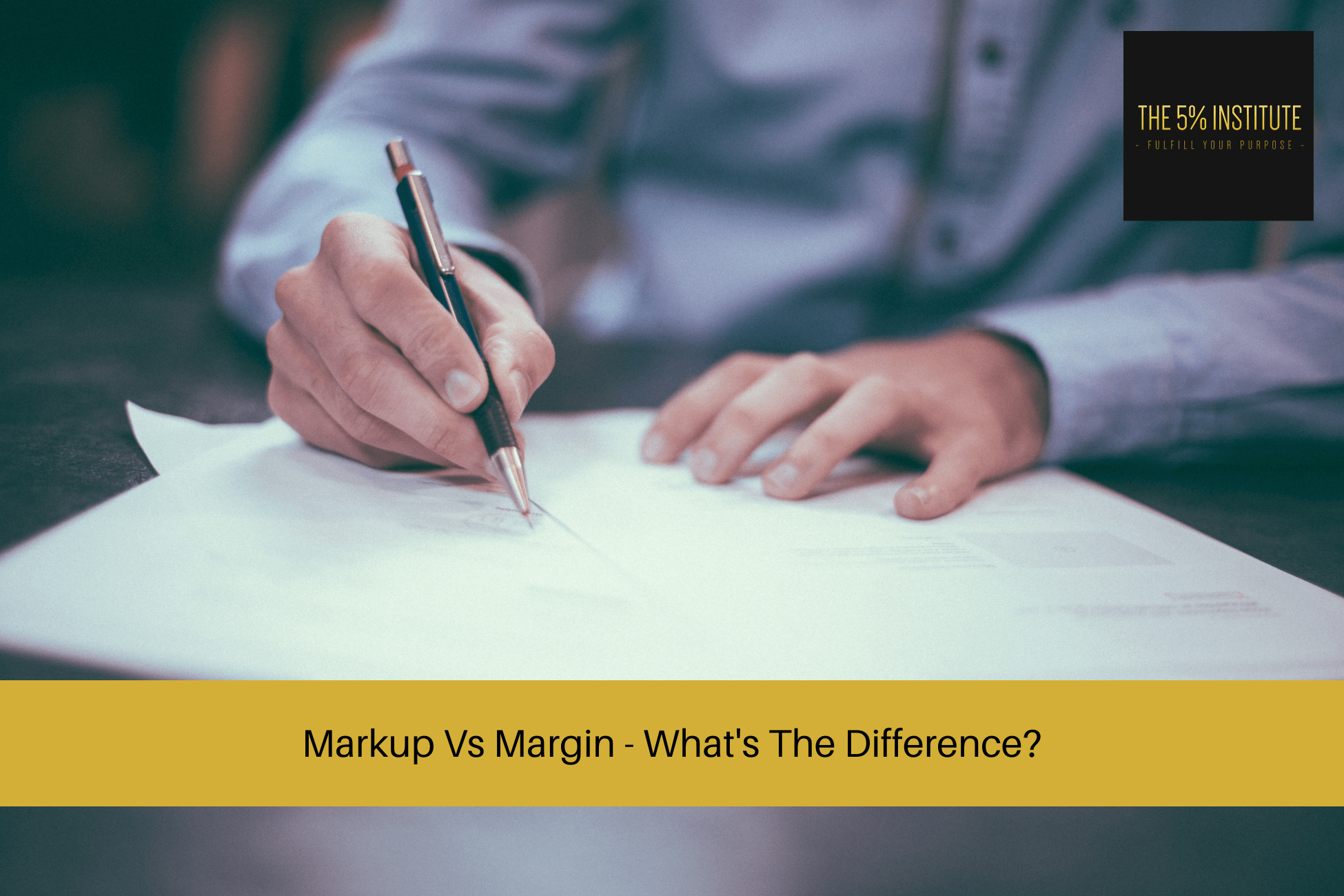
Markup Vs Margin – What’s The Difference?
When it comes to understanding the financial health and profitability of a business, two essential concepts play a crucial role: markup vs margin.
While both terms are used in the context of pricing and sales, they have distinct meanings and implications.
In this article, we will delve into the difference between markup and margin, how they are calculated, and their significance in various business scenarios.
1. What is Markup?
Markup refers to the amount added to the cost of a product or service to determine its selling price.
It represents the difference between the cost price and the selling price, expressed as a percentage.
Essentially, markup is the profit margin a business aims to achieve for each product sold.
2. How to Calculate Markup
Markup can be calculated using the following formula:
Markup = (Selling Price – Cost Price) / Cost Price
For example, if a product’s cost price is $50, and it is being sold for $75, the markup would be:
Markup = ($75 – $50) / $50 = 50%
3. Importance of Markup
Markup is a crucial aspect of pricing strategy as it directly impacts a business’s profitability.
Setting the right markup ensures that the business can cover its costs, account for operating expenses, and generate a reasonable profit.
4. What is Margin?
Margin, on the other hand, is the percentage of sales revenue that represents the profit after accounting for the cost of goods sold (COGS).
Unlike markup, which is calculated based on the cost price, margin is calculated using the selling price.
5. How to Calculate Margin
Margin can be calculated using the following formula:
Margin = (Selling Price – Cost of Goods Sold) / Selling Price
For instance, if a product is sold for $100, and the cost of goods sold is $60, the margin would be:
Margin = ($100 – $60) / $100 x 100 = 40%
6. Importance of Margin
Margin provides insight into how efficiently a business operates.
It helps evaluate the profitability of individual products or services and identifies areas where cost optimization might be needed.
7. Markup Vs Margin: Key Differences
The primary difference between markup vs margin lies in the base from which they are calculated.
Markup uses the cost price, while margin uses the selling price.
As a result, the numerical value of markup is higher than that of the margin for the same product.
8. Which One Should You Use?
The choice between markup vs margin depends on the business’s pricing strategy and goals.
If a business wants to ensure a specific percentage of profit on the cost of production, markup is more suitable.
On the other hand, margin is useful for gauging how much profit a business makes on its selling price.
9. Understanding Profitability
Profitability is the ultimate goal of any business.
Both markup and margin contribute to profitability, but they do so differently.
Markup directly affects the selling price, while margin focuses on evaluating the efficiency of sales and cost management.
10. Factors Affecting Markup and Margin
Several factors influence the decision to set a particular markup or margin.
These factors include market demand, competition, production costs, and overall business objectives.
11. Avoiding Pricing Pitfalls
Pricing products and services can be challenging, and businesses must avoid common pricing pitfalls.
Setting excessively high markup or margin might lead to reduced sales, while setting them too low might impact profitability.
12. Strategies for Optimizing Pricing
To strike the right balance between markup vs margin, businesses can adopt pricing strategies that consider customer behaviour, competitor pricing, and market trends.
13. The Role of Competition
Competitive analysis is vital in pricing decisions.
Understanding how competitors price similar products or services helps businesses position themselves effectively in the market.
14. Balancing Markup Vs Margin
A well-balanced pricing strategy incorporates both markup and margin considerations.
This approach ensures a competitive yet profitable offering for customers.
15. Markup Vs Margin – Conclusion
In conclusion, understanding the difference between markup vs margin is essential for any business looking to achieve profitability.
While markup represents the profit percentage based on the cost price, margin focuses on the profit percentage based on the selling price.
By carefully considering both these aspects and implementing effective pricing strategies, businesses can optimize their pricing and improve overall profitability.
Markup Vs Margin FAQs
Q: Can a product have a high markup and a low margin?
A: Yes, if a product has a high cost price relative to its selling price, the markup can be high, but the margin will be low.
Q: Which is more critical for long-term sustainability, markup, or margin?
A: Both markup and margin are essential for long-term sustainability.
Businesses must strike a balance between them to ensure profitability and competitiveness.
Q: How often should a business reassess its pricing strategy?
A: Pricing strategies should be periodically reviewed to account for changes in costs, market conditions, and competition.
Q: What is the difference between gross margin and net margin?
A: Gross margin is the difference between sales revenue and COGS, while net margin considers all expenses, including operating expenses and taxes.
Q: Can pricing strategies vary across different industries?
A: Yes, pricing strategies often need to be tailored to suit the specific dynamics and demands of each industry.
Want To Close Sales Easier?
Are you committed to closing sales a lot easier, and consistently?
If so, you should check out our self-paced and affordable online sales training program; The 5% Sales Blueprint.
It’ll give you everything you need to close sales consistently.
To learn more, simply click on the link below for more information.
Our Online Sales Training Program – The 5% Sales Blueprint.



